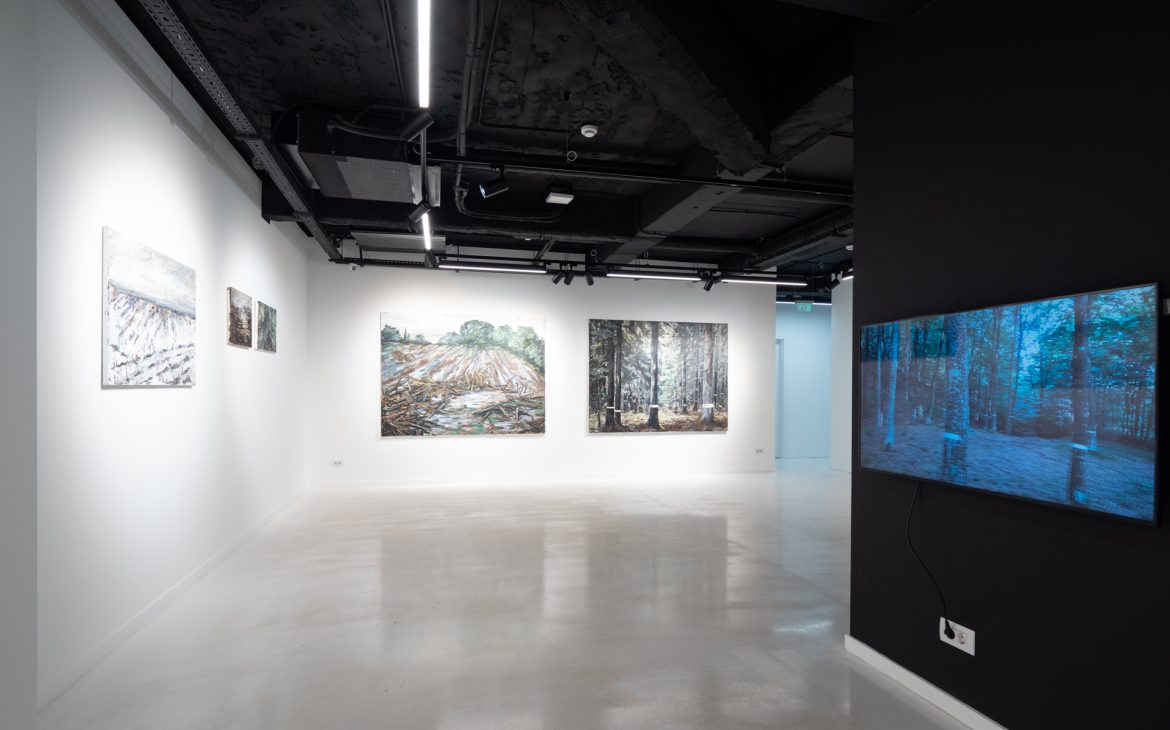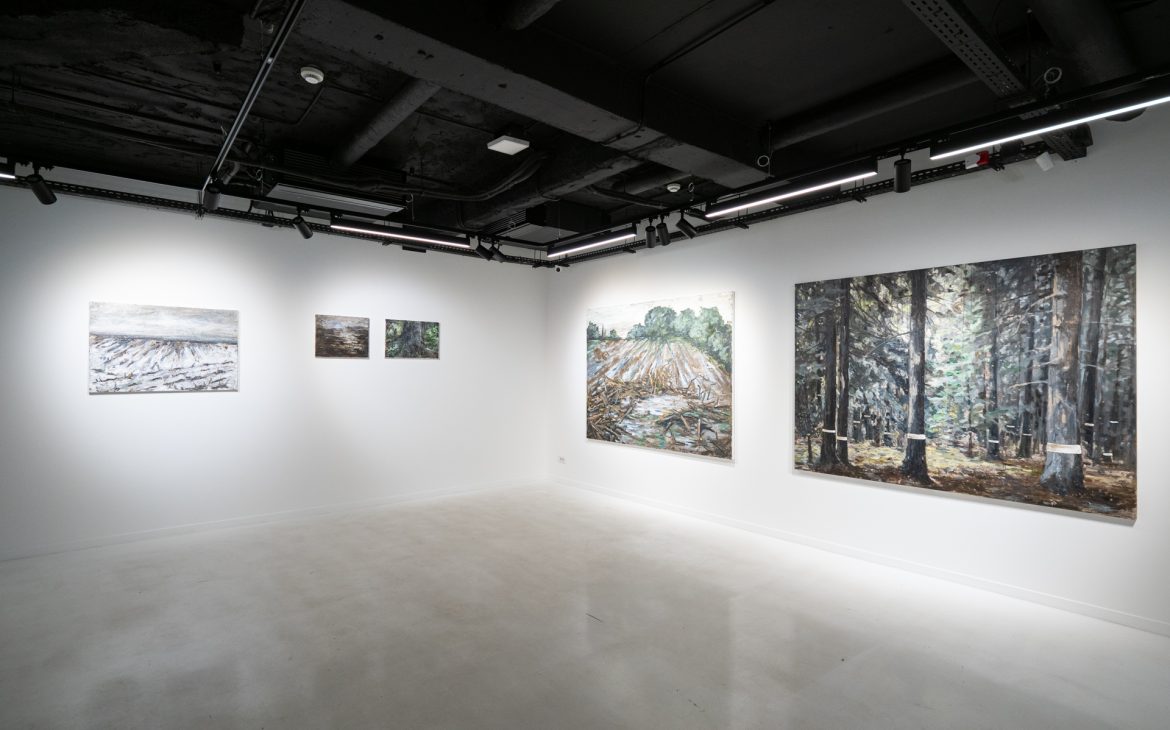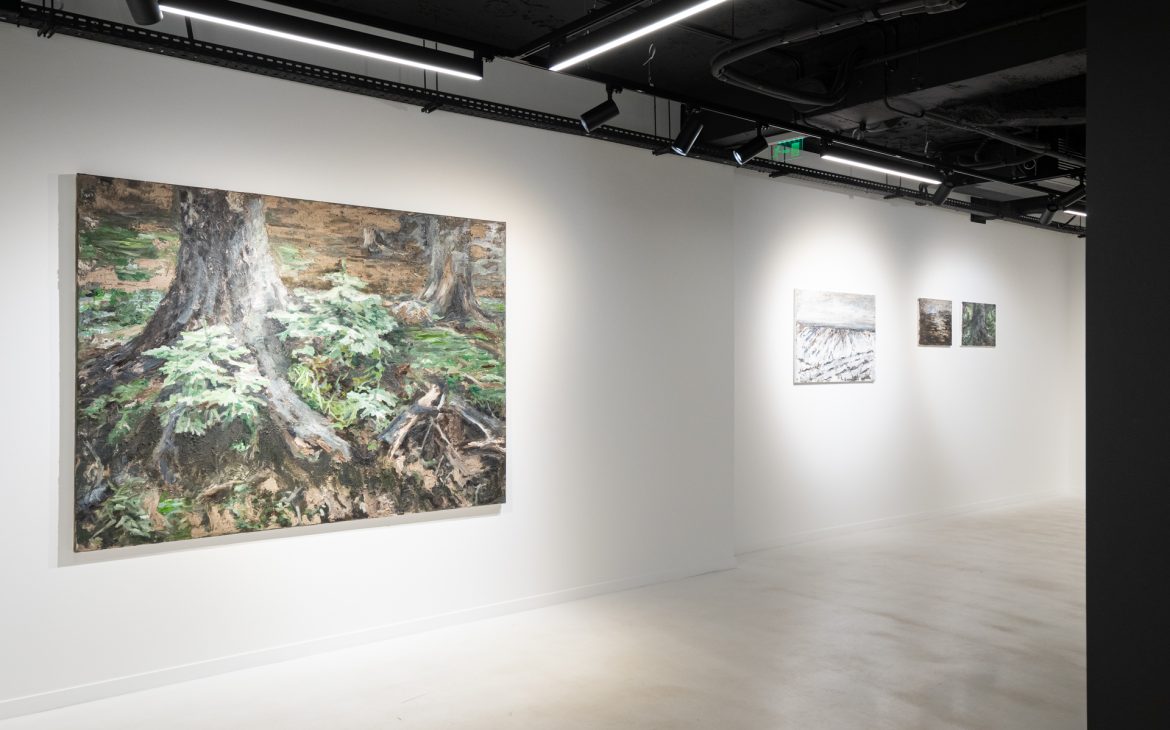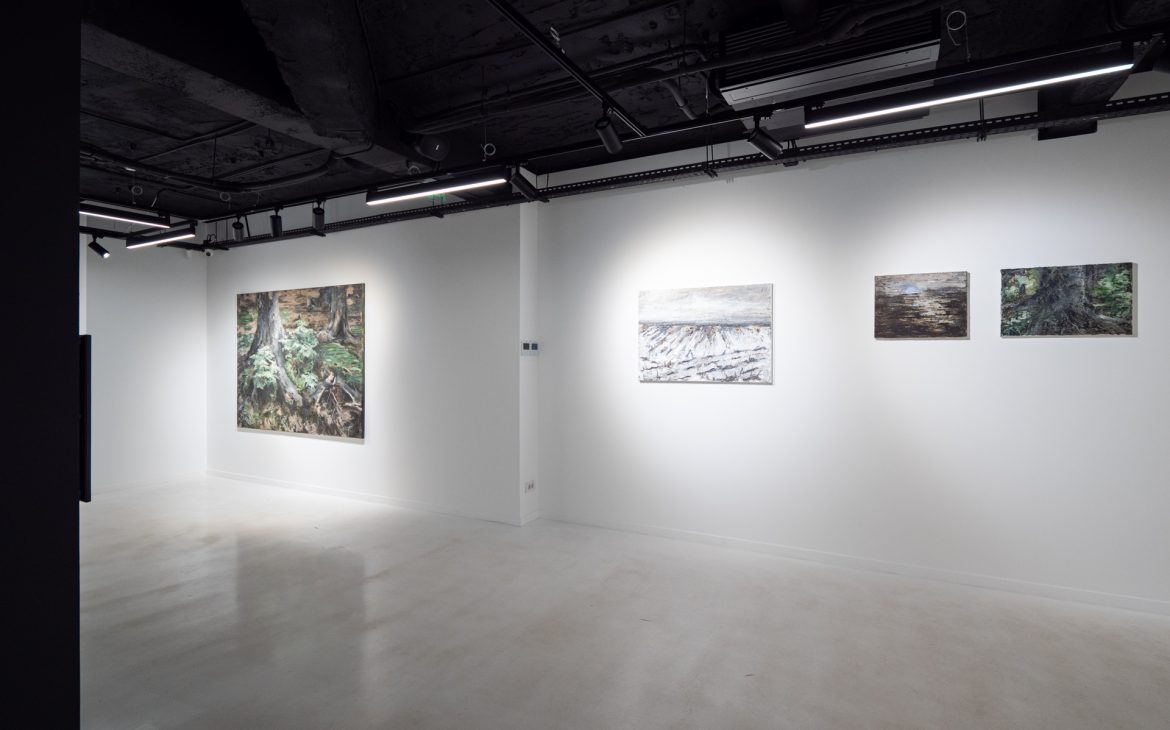The H Gallery presents the exhibition “Landmarkings” by the artist Cosmin Frunteș, open to the public until April 5, 2024.
“Too deeply buried by the consequences of the man-nature pseudo-dichotomy is still to be found that common and unignorable instinct of belonging. In everyday life we call nature that which cannot be included in the realm of things created by human means, as if the purpose-driven action of our species possessed an intrinsically transformative character. An entire era, the Anthropocene, materializes around this distinction, theoretically and scientifically structuring an era (much too short in geological terms), strictly based on an action-consequence type system, where the main and only actor is man.
Regarding the conceptual construction, Cosmin Frunteș revolves around this relationship understood as the primordial problem of being, without strictly limiting himself to researching the positions that man can develop in relation to a natural context. Between this theoretical fact as general as possible and the purely subjective artistic intuition acts an element that, by its very character, can bring the necessary reorientation in closing the wound opened by the distinction between man and nature: memory.
Subjectivized within the artistic process, nature becomes the expression of a universal nostalgia. Perhaps that sense of unconditional belonging originates in the uncertain place of early memories, however lived and told, where nature did not need a name and an explanation to be understood. Just as we have the ability to remember, so the natural space can be understood as a keeper of memories, through its ability to preserve traces. Thus, the natural frames composed by Cosmin Frunteș appear both through the prism of the reunion with that early reception, still conceptually unregulated, of nature, as well as through a careful consideration of the preserving character of the space. The image of the field is particularly highlighted by the artist as a place where the two aspects of memory circulate freely, informing each other: first through nostalgia, then as a residue of work and exploitation.
The emission, reception and preservation by space of these more or less intentional traces can also be talked about in the case of the performative act titled Horizons made by the NOIMA Group in 2016. The video recording presents in a loop the process of drawing a subjective, pluriperspective horizon and transmits, step by step, the artists attempt to concretize abstraction through the most graphic form possible: the line. As each tree bears the sign of an infinity estimated by the naked eye, the true horizon line is borne in turn by each and finally by none. In the end, a sign meant to guide the gaze towards an uninterrupted continuum ends up producing a totally opposite effect, where the fragment and the division become the elements that bring the certainty of disorientation. The performance is doubled by Cosmin’s work which anticipates the final effect of the action of the NOIMA group. In the absence of a video association, the landscape produces a strange impression that attracts multiple interpretations – a liminal place, where ordinary concepts of orientation such as direction and time lose meaning, or an upside-down forest path, where randomly marked trees guide the wanderer.
In the case of paintings, it is important to note the absence of the human figure or any elements associated with it. What asserts presence indirectly, instead, are the traces imprinted on the place. For example, when the element of the cut tree intervenes, what we see and assume has more to do with that absence than with the element itself represented. The trace left as a permanent reminder of the action has the opposite impact, as such traces give voice to the memory of the place.
Interpreted both in a natural, optical or biological sense, referring to the process of photosynthesis, and in its spiritual sense, light constantly updates the shadows of these traces-as-memories. Each painting visually renders light as the source of the natural world, without denying its immaterial, metaphysical character.
As a consequence of this approach, Cosmin Frunteș’s landscapes bring to light a freshly exhumed nature, conceptually or aesthetically unaltered, capable of carrying the enormous burden of its own memories. Although the artist thematically intuits the contextual relationship of man with nature, the visual conclusion is not limited to the immediately accessible and idealized landmark of absolute communion. The raw and potentially brutal nature appears in the works. Moreover, she appears in her perfectly blended aspect, bearing the memory of a primordial melange, recently transformed into a simplistically objectified platform of life. There are no boundaries. Each element flows and flows in accordance with the spontaneous impulse present on the whole surface. Textures play an important role in this, along with the general tactile impression that these residual material traces convey almost automatically to the viewer. As a final effect, the works take on a kind of plastic hardness meant to assert substance both in the open space of representation and outside.” TEA VINDT
Cosmin Frunteș (b. 1976, Brașov, RO) completed his studies at the National University of Arts in Bucharest, Painting section. He has been in dialogue with NOIMA artists since the group’s first years through Galleria 28 in Timișoara. He joined the group in 2014. For many years, he probed the border between painting and installation as an extreme collage. The ready-made sample (tin, textile objects, soil, ash, vegetable remains), the photographic image, and the pictorial paste are at Cosmin Frunteș the language of desperate, instinctual realism. A manifesto for the memory of the place in the face of imminent dissolution. Saturated color is a rare presence. Monochrome, greys and earth (literally and figuratively) dominate. The last years have brought a decantation. Compositions become minimalistic. More rationally, Frunteș reduces the surface load but preserves the logic of previous material explorations.









